Vengeance Is Mine, All Others Pay Cash: Shooting on 16 mm Films and Color Grading Over the Sea
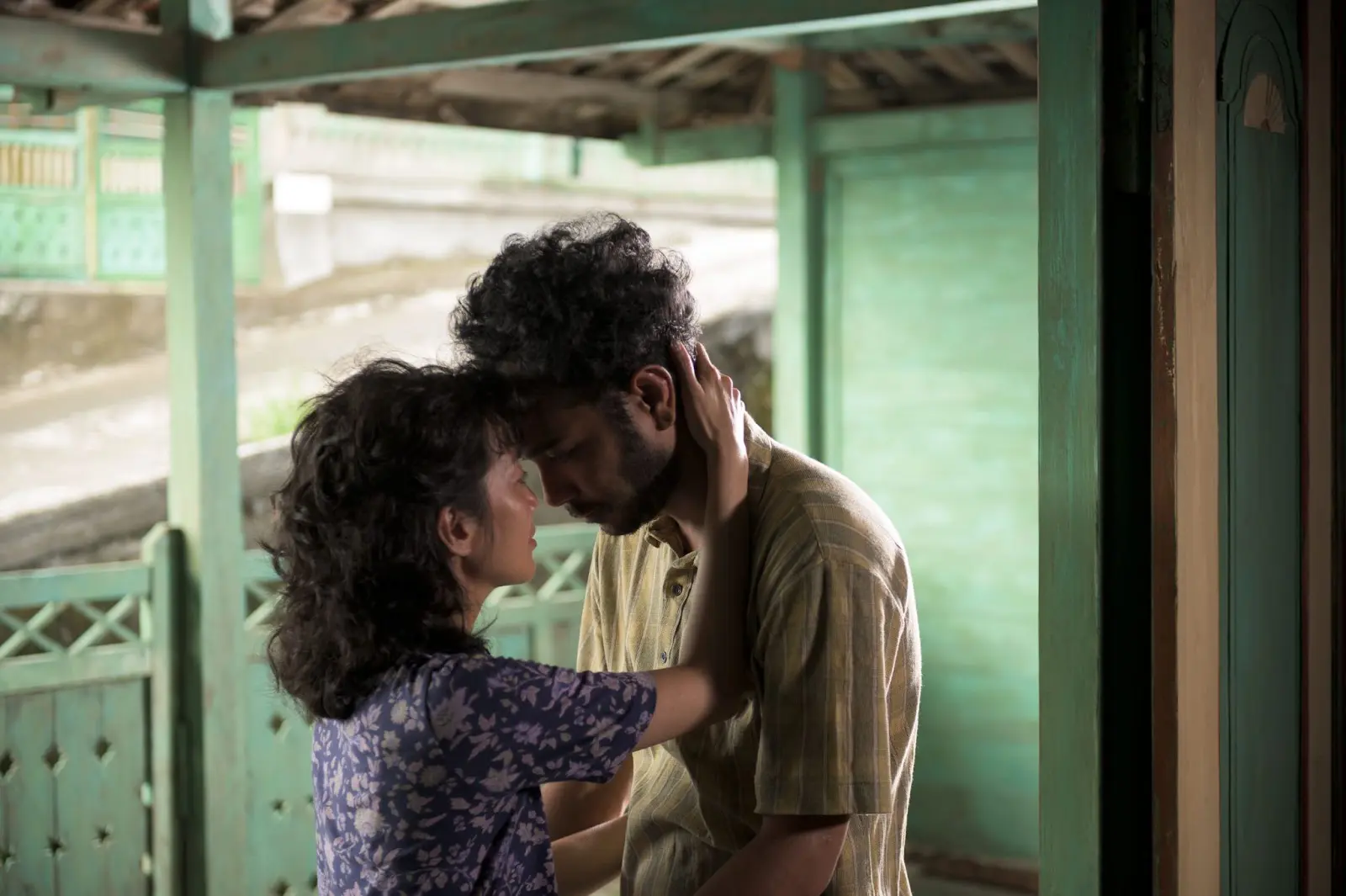
“I always amazed by the process of making film with celluloid. Not only it is a magical process, its also creates beautiful color, and contrast for the image.
When I shoot a film with celluloid, I can freeze time, and hold it, even smell it. I think that’s what I like mostly about using celluloid. Its magical, and also very tangible.
When I watch a film with analog projector, my senses feels all working. I’m very happy with this experience watching a film and shooting a film with celluloid.
And I hope the technology will not be disappear.” said Director Edwin.
Director Edwin (Edwin): Edwin is an internationally renowned Indonesian film director. His first feature film, The Blind Pig Who Wants to Fly (2008), was awarded the FIPRESCI Award at the International Film Festival Rotterdam. His second feature film, Postcards from the Zoo (2012), was in competition for the best movie at the Berlin International Film Festival. Vengeance is Mine, All Others Pay Cash (2021) won the Golden Leopard Award at the 74th Locarno International Film Festival.
Vengeance Is Mine, All Others Pay Cash will be sequentially released in theaters in Japan from Saturday, August 20, 2022. The movie was shot with 16 mm films in Indonesia, with an interruption period of shooting due to the COVID-19 pandemic. Post-production took place amid travel restrictions, and the movie was completed by utilizing the remote-grading technique.
Pre-Production, Test Shoot, and Making Decision about the Workflow
In the autumn of 2018, Cinematographer Akiko Ashizawa (Ashizawa) consulted us (our company was then called IMAGICA Lab.) about shooting a movie directed by Edwin in Indonesia on 16 mm films. At the time, the place to develop the film was undecided. It was either going to be at a lab in Bangkok, Thailand, or at our facilities. After the test shooting in October 2019, it was decided that our Osaka facility would develop the films, and our Gotanda (Tokyo) facility would handle the film scanning and the dailies. Using the test piece, a 16 mm negative film, we carried out the development, 4K scanning using Cine Vivo, and color grading by creating a LUT. Edwin appraised the result by saying, “the look is perfect, and it shows why I chose to use films.”
(This workflow was confirmed at the pre-production phase.)
Before the shooting started, Ashizawa, the on-site camera crew, and our staff had thorough discussions with Producer Taurisia (Meiske). About this, Edwin said, “I learned from her, that pre-production is very important stage and also the most enjoyable process in filmmaking. This is the stage where we can share knowledge and experience as filmmakers and as human beings.”
Filming Started and Interrupted
On February 26, 2020, the shooting of the movie began. On February 28, our Tokyo facility received the first shooting’s negative films for development. We developed them the following week, on March 2. On March 4, Colorist Shigeyuki Toriumi who checked the dailies informed Ashizawa and Chief Kenji Hamada by email that “the look was also excellent.”
To check the dailies, we created LUTs for each film/processing types. For MP4 files, we used independent LUTs for each development process.
For offline editing, we created the media file with ProRes LT (log). We then delivered the media file and the LUTs via our corporate network transferring service.
To report the dailies results, we organized a cycle where our Technical Director Eiji Ishibashi would write an email after each check to the onsite crew and the offline editing staff in Bangkok.
| Film Type | 7219 (500T) and 7203 (50D) |
| Developing Process | Normal speed Push Processing Double Pull Processing 1/4 1/8 |
In mid-March 2020, the COVID-19 infections began to spread in Indonesia to the point that the shooting had to be stopped at the end of the month. The crew from Japan had no choice but to return to Japan, even though there were a few more days of shootings left on the schedule.
Shooting Restarted and New Workflow Built
Although we were faced with several challenges at this time, we were able to overcome them as we had worked closely together in pre-production, which gave us a solid foundation.
The shooting was set to restart in August. The HDD (10TB) which stored the scanned data was hand-carried to Indonesia by Ashizawa herself. On August 10, we heard from Ashizawa. “We’ve somehow made it.” This was a notice that the filming was completed. We were all relieved. Although we had decided that Ashizawa would personally bring back the films for development, transporting 20 cans of films must have been extremely tough.
We received the negative films for the parts shot after the restart of the shooting, scanned them, created the media for dailies, and successfully delivered them via the network.
There was yet another travel restriction. This time it became a huge obstacle as Ashizawa could not go to Bangkok for color grading.
Remote-grading between Bangkok and Tokyo
In September 2020, we began a discussion on remote-grading between Bangkok and Tokyo to proceed with the production of the movie despite this travel restriction.
After much consideration involving our Grader Noboru Yamaguchi, we concluded to use the remote-grading function of DaVinci Resolve under the following conditions.
Setting Up the Remote-grading Environments
- Both sides will retain the same material (data).
- We will store the scanned data and the VFX cuts from Bangkok on RAID connected to Thunderbolt 3.
- Both sides will unify the version of Resolve.
- Both sides will share the same Resolve project (what will be created in Bangkok will be shared with Tokyo.)
- We will then open the project received and re-link the material.
- We will retain the same plug-in used (needed) in Bangkok.
- We will confirm the network settings of the Bangkok workstation.
- We will connect our machines to the internet.
- Set up the software (Resolve)
Additionally, a three-way online meeting by the members in Indonesia, Thai, and Japan was held to decide these matters.
| Projector settings | Rec 709, Gamma 2.4, and 6500K |
| LUT used | Film type for the shooting and different ones per development process |
| Working time | 10 hours per day. Work begins every day at 11 a.m. JST, considering the 2-hour time difference. between Tokyo and Bangkok. |
| Colorist | Dew (White Light Studio Co., Ltd.) |
| Grading Advisor | Shigeyuki Toriumi |
| Remote Grading Operators | Noboru Yamaguchi and Takefumi Saito |
| Communications tool | Google Meet |
| Interpreter | Yu Inose |
Here is the process workflow shared by the three countries over three weeks.
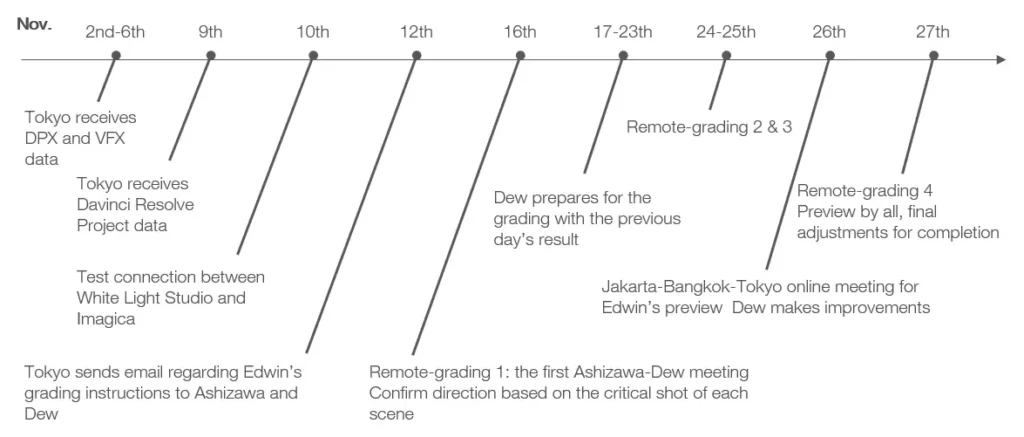
Evaluation of Remote-grading and Significance of Shooting on Film
“As expected. It looks very good. I am very satisfied. I watched the full graded version on the big screen. The colors, and the texture of the image have created particular sensations to my senses.
I can even smell something comes out from the image. It is beautiful experience.” said Edwin.
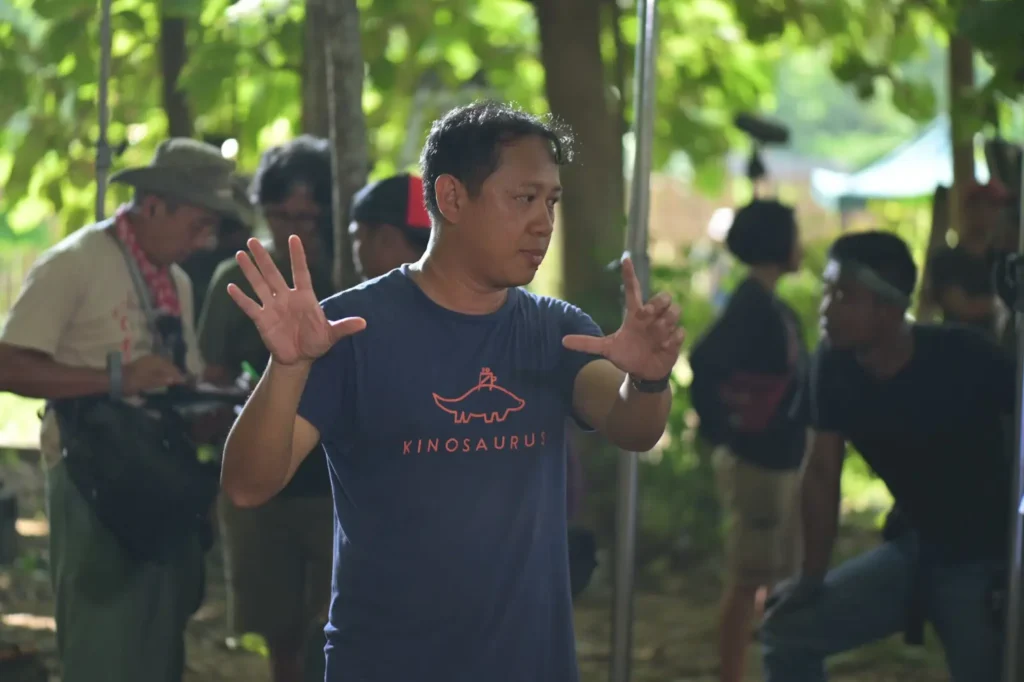
He continued, “
I think the grading process went well, because we did several tests during preproduction. We shot several tests with different film stocks, filter, and pull/push process. With the test Akiko built the LUT, that later can be used for the color grading stage.
I love the way the celluloid brings details. It is always amazing. The detail from celluloid always triggers imagination.
That’s what we want to maintain during the whole process of using celluloid. We want the colors and the details, bring more imagination to the audience.
Meiske passionately shared his thoughts about the importance and the meaning of using 16 mm films for this movie.
“Nevertheless, in regard to shooting with film, we learn a lot from this production.
We learn that Indonesians have a very limited choice in filmmaking and film experience.
Indonesia doesn’t have a film stocks distributor, film lab facility – processing, scanning, printing-, and poor condition of film (celluloid) equipment.
Which consequently contributes to the extinction of film professionals dedicated to celluloid and, furthermore the knowledge.
We have limited number of film professionals, who is capable of performing film production with celluloids.
And this is a threat to the development of creativity within the film industry, particularly artistically.
Film, celluloid, is a medium of expression.
With no access to celluloid means there are generations that might not know or not be able to understand the wide spectrum of film.
Or in other words, the lack of film experience for both filmmaker and film audience.
When I saw the rushes for the first time during the test cam in October 2018, I was very sure that this was something that I would want to proceed.
I missed the look, the color, and the texture of the film celluloid.
And I want to complete the film with celluloid, and believe it will be the best for the film.
Since then, I have never regretted that decision.
I am very satisfied with the result, respect the team effort of both countries, and am proud to present the film for the audience worldwide.
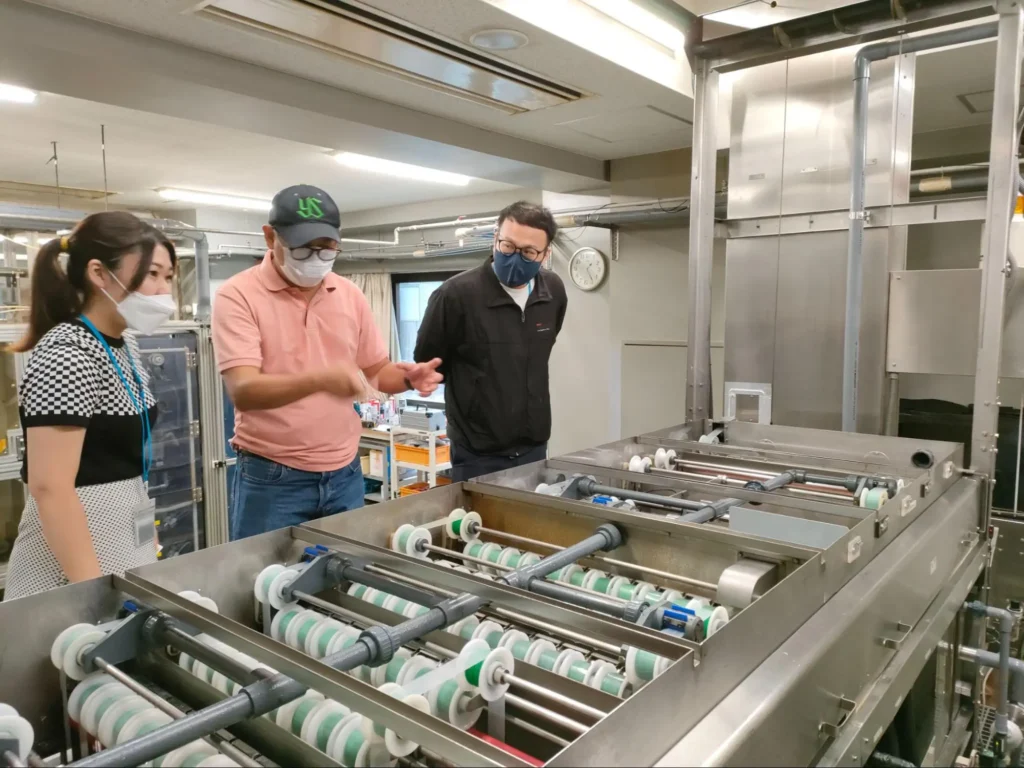
To his left is Riko Fujiwara, our lab coordinator, and to his left is Ryoji Ito, our film processing staff.
This movie, completed after overcoming challenging situations with the endeavors of Asia’s talents and the Japanese crew, will be shown from August 20 in the following theaters.
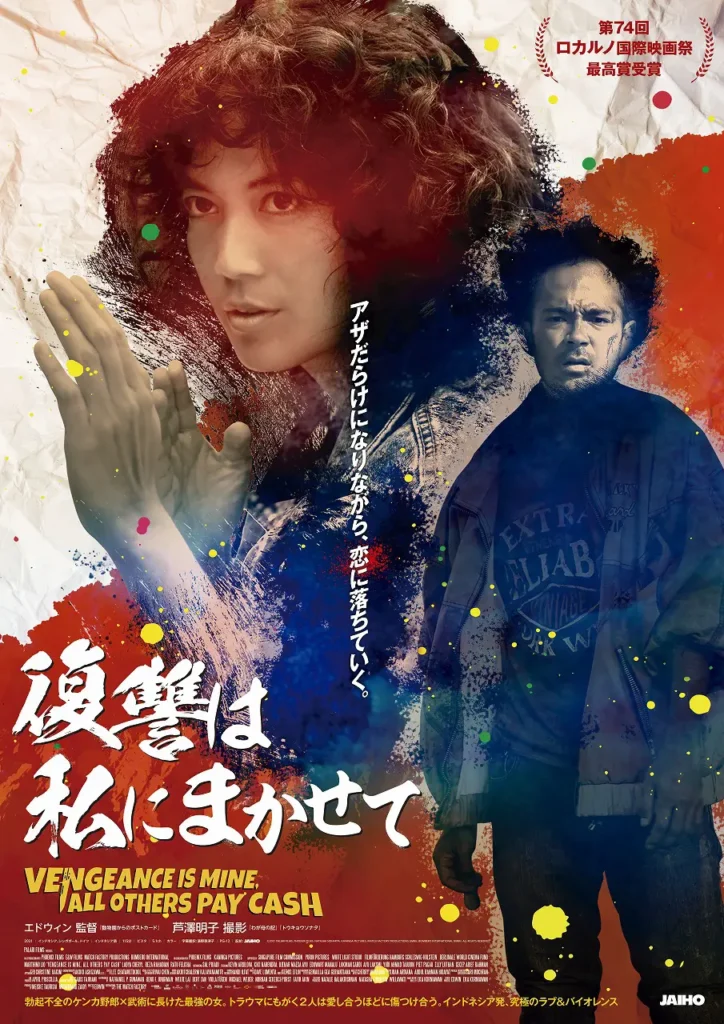
Vengeance is mine, All Others Pay Cash
Sequential nationwide road show from Saturday, August 20, 2022
Director: Edwin
Director of Photography: Akiko Ashizawa
Cast:
Marthino Lio
Ladya Cheryl
Ratu Felisha
Reza Rahadian
Copyright:
Ⓒ 2021 PALARI FILMS. PHOENIX FILMS. NATASHA SIDHARTA. KANINGA PICTURES. MATCH FACTORY PRODUCTIONS GMBH. BOMBERO INTERNATIONAL GMBH. ALL RIGHTS RESERVED
This article is a re-edit of an article on Motion Picture and Television Engineering, No. 824, April 2021.

